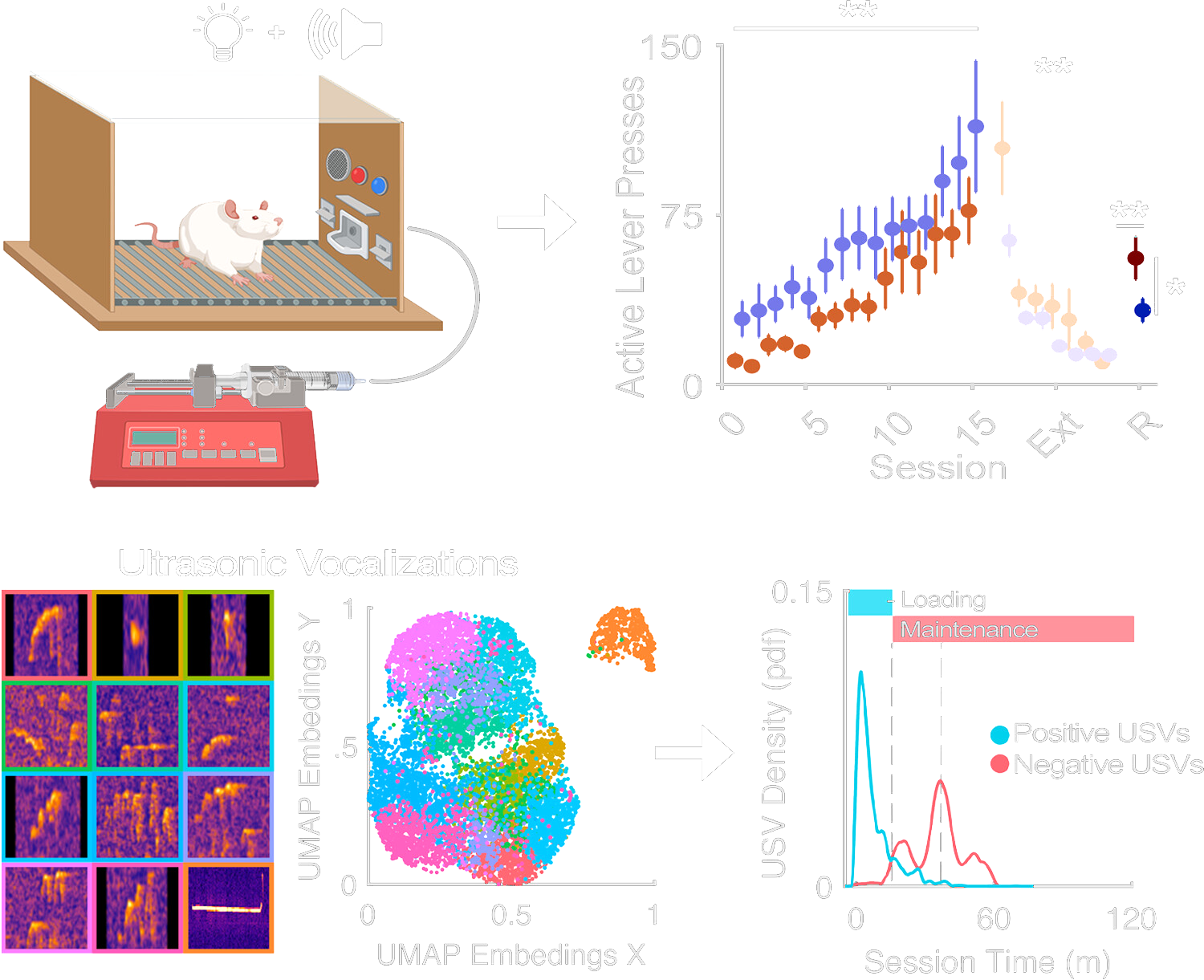Oral Fentanyl Self- Administration
We have recently developed an oral fentanyl self administration model in male and female rats. This model faithfully captures different components of fentanyl use disorder, including escalation of intake, persistent relapse, and individual and sex differences. This model is used in our other work to explore the neural dynamics of addiction and to test novel therapeutics for fentanyl use disorder.
Positive and Negative Affective States in Fentanyl Use Disorder
Motivation to consume opiates shifts from positive to negative reinforcement throughout use. Our previous work outlines this shift with respect to loading and maintenance phases of drug intake during self-administration sessions via ultrasonic vocalizations (USVs) recorded and analyzed with our open-source software, DeepSqueak. Going forward we will combine this strategy with video behavior analysis, neural recordings, and neural manipulations to relate modulation of motivational circuits with the change of affective state.
The Lateral Habenula Circuits in Fentanyl Use Disorder
The Lateral Habenula (LHb) is a small brain region that integrates signals related to emotion and reward valuation and projects to regions involved in motivating behavior. Recently we have found this region is activated early in self-administration as the cue-reward association is being formed, as well as in contexts of withdrawal avoidance. Using a variety of optical recording and manipulation techniques, we aim to dissect the influence of LHb efferent pathways on behavior during fentanyl escalation, relapse, and withdrawal.
Individual Differences in Susceptibility to Opiate Use Disorder
A minority of individuals who use opiates develop opioid use disorder, making it critical to understand physiological correlates to susceptibility. A leading hypothesis for the transition from use to abuse in vulnerable individuals is the recruitment of drug-induced gene expression changes in certain brain circuits and cells following repeated drug exposure. We are collaborating with several labs to integrate large-scale, high-resolution approaches to achieve comprehensive molecular and functional profiling of brain-wide ensembles during different stages of opioid use. This approach includes single-cell transcriptomics, whole brain activity mapping, and functional neural ensemble recordings with the oral fentanyl self-administration paradigm.


